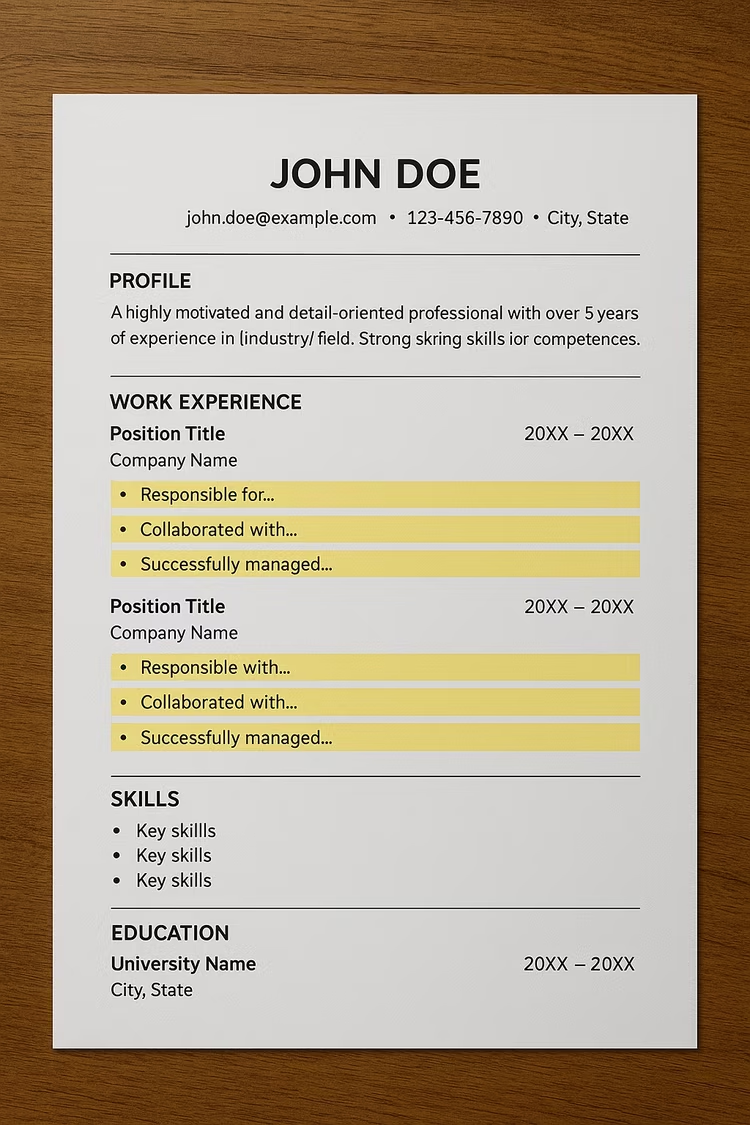In today’s competitive job market, a well-crafted CV is crucial to landing interviews. This guide provides actionable strategies such as optimal formatting, keyword optimisation, and tailored customisation to ensure your resume stands out. Learn how to avoid common mistakes, showcase soft skills effectively, and craft a compelling professional summary that captures hiring managers' attention in seconds.
Today’s job market is brutally competitive, and while multiple qualifications and certificates may be top-tier, you need to go the extra mile to stand out as an ideal candidate. A CV is more than just a summary of experience, it’s your professional ID card. Hiring managers spend an average of six to seven seconds (imagine that!) scanning each CV before deciding whether to move forward. That means every word, every section, including the layout must work in your favour. So, how do you craft a CV that not only passes the initial skim but strategically positions you as the ideal candidate?
This guide breaks down expert-backed strategies to make your CV stand out and position you perfectly for your next job application.
Master the Art of Formatting
A well-structured CV isn't about aesthetics - it improves readability and helps recruiters find key information quickly.
- Keep it concise. Aim for a maximum of one to two pages, unless you’re in academia or research.
- Opt for a good, clean-looking font. The classic options are Arial, Calibri, and Times New Roman in 10–12 pt size.
- Prioritise key sections. The most critical information —summary, skills, and experience — should appear within the top third of the page.
- Use bullet points, not paragraphs. Hiring managers skim, so structure achievements as concise bullet points (ideally 5–6 per role).
“A cluttered CV is a quick way to lose interest. White space is just as important as the content itself,” advises Laszlo Bock, former Senior VP of People Operations at Google.

Tailor Your CV for Every Role
- A generic CV is a missed opportunity. Customising it for each application increases your chances of passing through Applicant Tracking Systems (ATS) and impressing recruiters, it also shows that you’ve done your due diligence in understanding potential employee-company compatibility.
- Try to mirror the job description as closely as possible. Use keywords from the listing in your skills and experience sections.
- Highlight the most relevant experiences. Emphasise experiences revolving around campaign management and not irrelevant work history.
- Quantify your achievements: instead of “Managed social media accounts,” say “Increased engagement by 45% in six months.”
“Hiring managers don’t want to guess what you can do. Spell it out with clear numbers and results,” says Lou Adler, CEO of The Adler Group and a global recruiting expert.
The Power of Keywords: Beat the ATS
Most companies use AI-powered Applicant Tracking Systems (ATS) to filter CVs before a human sees them. If your CV lacks the right keywords, it may never reach the hiring manager’s desk, and your application will be deemed futile.
- Include both acronyms and full terms (e.g., “SEO” and “Search Engine Optimisation”).
- When looking for keywords, remember to thoroughly scrutinise the job description and refer to all the other industry-related terminology.
- Avoid overstuffing: use keywords naturally in your experience, skills, and summary.
“Think of your CV like a website - if recruiters can’t find the right words, you won’t get clicks,” advises career expert Amanda Augustine of TopResume.

Showcase Soft Skills Without Saying “Good Communication Skills”
Recruiters see generic phrases like “team player” or “hardworking” thousands of times. Instead, demonstrate your soft skills through achievements:
- Managed a cross-functional team of 10 on product launch 3 weeks early. (Leadership, Collaboration).
- Resolves 95% of customer complaints within 24 hours, giving a 20% jump in customer retention. (Problem-Solving, Customer Service).
Show, don’t tell. Let your accomplishments prove your skills.
Common Mistakes That Kill Your CV
Even the most qualified candidates get overlooked because of small but costly mistakes.
Avoid these common mistakes on your CV:
- Adding a picture to your CV: Yes, looks do matter to an extent, but maybe let your selfie sit this one out. Some positions (usually the modelling and media industry) do call for a professional portrait, but if they don’t, it's best to leave the picture out.
- Spelling and grammar errors: 77% of recruiters reject CVs due to typos. Use tools like Grammarly or have a friend proofread.
- Unprofessional email addresses: Stick to [email protected], not [email protected].
- Gaps without explanation: If you took time off, include a brief note (e.g. Career break for professional development).
- Leave out discriminatory attributes like religion, gender, age and marital status: Unless these are specifically asked for, there is no need to add that information.

The Finishing Touch: A Strong Personal Summary
Your summary (or professional profile) is your elevator pitch - the first thing a recruiter reads. It should:
- Be 3–4 lines long.
- Highlight your key strengths and unique value.
- Include years of experience and industry.
Example:
“Results-driven Social Media Manager with 5+ years of experience in digital marketing, content strategy, and paid advertising. Proven ability to increase website traffic by 60% and optimise conversion rates. Passionate about data-driven marketing solutions that drive business growth.”
This immediately tells hiring managers why you’re the right fit.

Your CV Is Your First Impression, Make It Count
A standout CV isn’t just about listing qualifications; it’s about strategic storytelling. Let this document mirror who you are. Give it, and ultimately yourself a perfect first impression. From polished formatting and tailored applications to keyword optimisation and impactful achievements, these strategies will set you apart in any job market.








